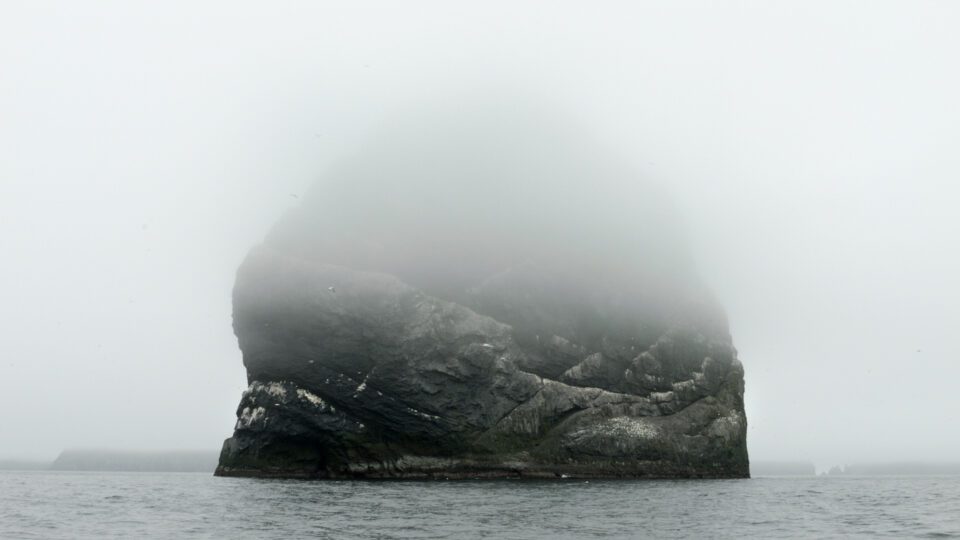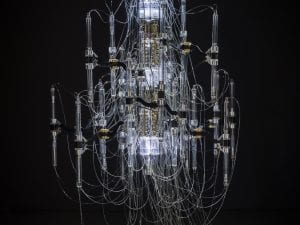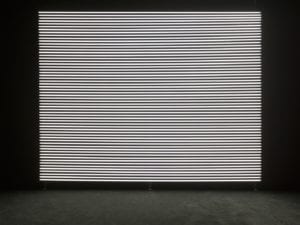Lesions in the Landscape at FACT Liverpool by UK/Danish artist Shona Illingworth is a powerful new multi-screen installation, exploring the impact of amnesia and the erasure of individual and cultural memory. Revealing the devastating effects of amnesia on one woman and the striking parallels with the sudden evacuation of the inhabitants of St Kilda in the North Atlantic in 1930, the work examines the profound effect and wider implications of memory loss on identity, space and the capacity to imagine the future. We speak with the artist about her work.
A: How does Lesions In The Landscape explore the notion of collective memory?
SI: This project explores the impact of amnesia and the erasure of individual and cultural memory. Investigating the experience of the devastating effects of amnesia for one woman and the striking parallels with the sudden evacuation of the inhabitants of St Kilda in the North Atlantic in 1930, the work examines the profound effect and wider implications of memory loss on identity, space and the capacity to imagine the future. The project draws on the direct experience of a woman called Claire who at the age of 44 had viral encephalitis which caused a large lesion in the right hemisphere of her brain that caused her to lose access to most of her memories of her past including memories of the years spent bringing up her children. She is also unable to consolidate access to new memories that she has been able to form and has prosopagnosia which is the inability to distinguish or recognise faces. The project explores parallels with the process of cultural amnesia both in the historical construction and present day context of the island of St Kilda, a remote archipelago off the west coast of Scotland which was inhabited for over 4,000 years (since the Stone Age) until the evacuation of the island on 29th August 1930.
A: Your practice examines the experience of recollection and the formation of identity in situations of social tension and trauma; have advances in modern psychiatry or particular case studies had an influence on the work produced?
SI: The work is informed by ongoing dialogue with neuropsychologist Martin A Conway, one of the foremost international researchers into autobiographical memory. And more recently in the past four years with his colleague, neuropsychologist Catherine Loveday. The advances in memory research during those years has been very dynamic and their work in particular – on the relationship between memory and imagination, the central role that memory plays in our capacity to imagine the future, their work on autobiographical memory and Claire’s use of Sensecam. Sensecam is a small sensor-equipped camera worn around the neck, which takes point of view images every time the camera moves, or every 30 seconds. When Claire reviews these images, an image on occasion will cue access to a sudden flood of intense recollection of an event she would otherwise be unable to remember anything about. I’m very interested in memory’s central importance in our capacity to locate ourselves in space and time, the impact of amnesia on this, and that while maybe thousands upon thousands of memories constantly have an influence on our experience of the world, only a few can actually be brought into consciousness. Martin and Catherine’s work with Claire and subsequently my close collaboration with her over the last three years has really highlighted the profound importance of memory as a dynamic and constantly updating system that enables us to move through time. These ongoing dialogues inform the development of my work and exploration of the intersections between the complex individual and societal processes of memory and impact of amnesia.
A: How do you find splitting your time between fine art practice and fine art lecturing?
SI: I work at the school of Music and Fine Art at the University of Kent which is a very dynamic and creative environment in which research led teaching plays an important role. I find that my practice informs the teaching very directly. I very much enjoy working with young emerging artists. I think a fine art education is a fantastic and valuable thing and it’s good to be involved in that exchange with a younger generation of practitioners.
A: Balnakiel explores the neuropsychology behind strategies memory employs to attempt to either articulate or suppress strong undercurrents of experience when a sense of self and community identity is under threat; how do you negotiate the perceived void between art and science?
SI: The current exhibition and large scale project Lesions in the Landscape draws directly on and develops the exchanges with Martin A Conway that also informed Balnakiel. For this current project these discussions and investigations are very much extended and include international collaboration with curator and writer Jill Bennet from the University of New South Wales, with whom I curated an experimental forum and exhibition called The Amnesia Lab, which brought together an international group of artists, scientists and researchers. Throughout the project there is an ongoing series of Amnesia Forums which bring together scientists, researchers and practitioners from other disciplines including Andrew Hoskins, sociologist and expert in media and memory, Issie MacPhail, cultural geographer and historian, and Caterina Albano, curator and writer, amongst others. The politics of memory, amnesia and cultural erasure are examined though discussions with artists, scientists, filmmakers, geographers, anthropologists, linguists, writers, archivists and curators, which feeds directly into the project. These experimental forums provide an opportunity to discuss issues across both research and art practice. And so in my experience, there is no sense of a void.
A: Have you observed a change in memory patterns as our society increasingly records every aspect of existence, yet often does not live in the moment?
SI: The media that we record, whether photographs, sound or video have the potential to act as cues for memory, but are not memories in themselves. Human memory is incredibly complex and dynamic and constantly changing as it moves through time and space and is activated by many things. These recordings are part of that larger environment that we inhabit.
Lesions in the Landscape shows at FACT (Foundation for Art and Creative Technology) in Liverpool from 17 September-22 November, and then tours to Sydney Australia, the Outer Hebrides, Scotland and finally to London, where there will be an international symposium in October 2016.
Follow us on Twitter @AestheticaMag for the latest news in contemporary art and culture.
Credits
1. Shona Illingworth, Lesions in the Landscape, Stac Lee St Kilda, Production still, 2015. Courtesy of the artist and FACT, Liverpool.





